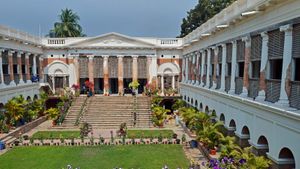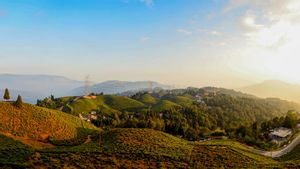India, as a country, has been a witness to several chapters in its long and ancient history.
Many rulers came and went, leaving the influence of their culture and themselves behind in some way or the other. India stood witness to all these different cultures, different rulers and the many historical places they left in their wake. Every Indian state has its fill of such sites, monuments, and other symbols that signify the rich history and tales behind them. West Bengal is no exception. One can find an abundance of historical places in West Bengal. With British, Muslim, and Hindu rulers among many others ruling over West Bengal at different points of time in History, you will find that the historical places in West Bengal bear influences of a mix of all these different cultures. We bring to you an interesting cultural and historic mix below.
The most interesting historical places in West Bengal
1. Hazarduari Palace, Murshidabad
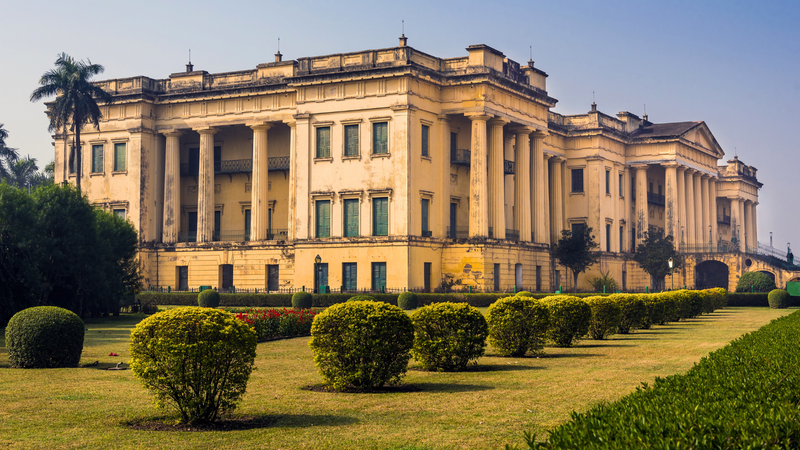
Perhaps one of the most famous historical places in Murshidabad, West Bengal, Hazarduari Palace stands tall in all its glory and splendour even after all this time. Its grandeur has not diminished at all due to the passage of time. The palace is spread across a sweeping, expansive area, further multiplying its magnificence. The famous palace is located majestically on the banks of the River Bhagirathi. The grand palace, an extremely attractive tourist attraction, pulls tourists from all across India and the world to give them a unique insight into the larger-than-life lifestyle of the Nawabs from the bygone era. Many other equally historic places in Murshidabad, such as Nizamat Imambara, Footi Mosque, Wasif Manzil, etc. stand on the premises of the palace or nearby the palace.
Best time to visit: October to March
Timings: 9 am to 5 pm, Friday closed
Entry fee: Rs 5 (Indian nationals) and Rs 100 (foreign nationals)
2. Kathgola Palace, Murshidabad
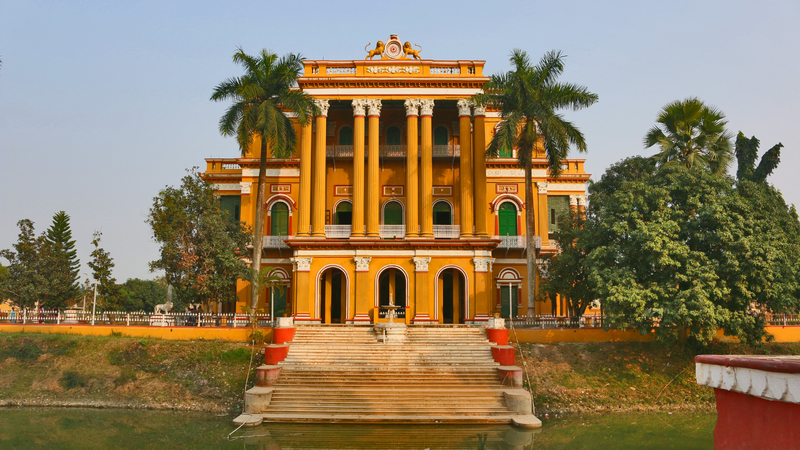
The palace, built to entertain European and Muslim guests of trade, is an architectural marvel. The beautiful palace building, along with its beautiful gardens, ponds and even a temple, completes the incredible palace complex, said to be far ahead of its time. KathGola is a marvellous historical place in Murshidabad. The serene Adinath Jain Temple on the palace premises dates back to at least 1793. Located at a mere distance of just five kilometres from the Hazarduari Palace, these buildings are an enchanting example of the history of India.
Best time to visit: October to March
Timings: 9 am to 5 pm
Entry fee: Free
3. Dakhil Darwaza, Malda
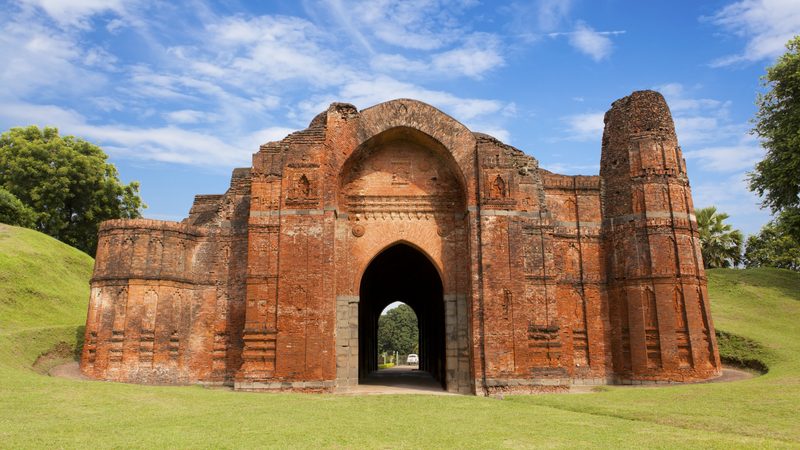
A significantly important historic site in West Bengal, the famed Dakhil Darwaza is all that remains of a castle that is said to have been built in the fifteenth century, as per the experts. The gate is all that remains of the ruins of the castle. Dakhil Darwaza, as the name suggests, was the gateway to the ancient fort. Although almost no ruins remain to narrate the tale of the said castle, you can still witness ruins off the structure’s high wall, in its south-east corner. The Dakhil Darwaza was also famously called the Salaami Darwaza because when the castle existed, the gate was used to fire cannons.
Best times to visit: October, November, and March
Entry fee: Free
4. Cooch Behar Palace, Cooch Behar

Cooch Behar Palace, a historical monument in the small once-upon-a-time princely state of Cooch Behar, is another famous example of Indian history. Cooch Behar, now a small town in North-West Bengal, once was the seat of the Koch dynasty. The town is famous as being the hometown of the very famous, Maharani Gayatri Devi, the wife of the king of Jaipur. She was one of the, if not the most famous Maharanis of the chapter of Indian princely states. The Cooch Behar Palace is a symbol of this magnificent leg in our history. Styled after the architecture of Buckingham Palace, London, the Cooch Behar Palace is a glorious piece of architecture.
Best time to visit: All around the year
Timings: 10 am to 5 pm, Friday closed
Entry fee: Rs 10
5. Victoria Memorial, Kolkata
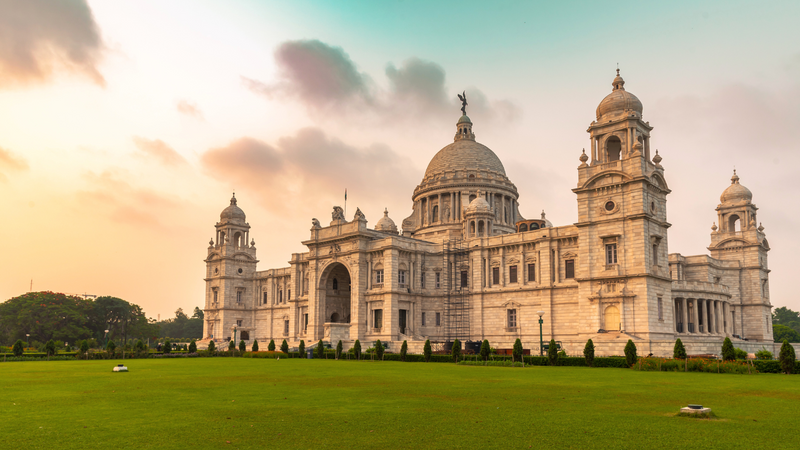
One of the most iconic symbols of British history in India, this historical monument was built in the years from 1906-1921. The person behind the conception of the monument was the British Lord Curzon. He wanted a monument to be built that symbolised the completion of twenty-five years of the queen’s rule over India. The memorial is a majestic monument, built completely of pristine white marble. The architecture of the memorial is a mix of different styles such as Egyptian, Mughal, and other Indian influences among others. Vast, pleasing gardens surround the monument from all sides, rendering a splendid view.
Best time to visit: October to February
Garden timings: 5:30 am to 6:15 pm
Gallery timings: 10 am to 5 pm, closed on Fridays and national holidays
Garden entry fee: Rs 10
Gallery entry fee: Rs 20 (Indian nationals) and Rs 200 (foreign nationals). Free entry for school children upto 12 years of age and army personnel while in uniform
6. Belur Math, Belur

Belur Math considered the seat of the Ramakrishna Math and Mission, was built by Swami Vivekananda in the late 1800s. Picturesquely located on the banks of the River Hoogly, people from all around travel to Kolkata to visit this historical site, irrespective of their religious faith. The temple is known for its different spiritual practices, such as the lack of any offerings or flowers being made in the temple or the visitors being asked to sit and meditate instead of singing prayers. The temple has been built to symbolise the diversity of religious beliefs in India, a diversity worth celebrating. The temple, as viewed from different angles, resembles a mosque or a temple or a church, thus becoming the spiritual hub instead of a religious one.
Best time to visit: October-March
Timings: 6 am to 11:30 am, 4 pm to 7 pm (April to September) and 6:30 am to 11:30 am, 3:30 pm to 6 pm (October to March)
Entry fee: Free
7. Indian Museum, Kolkata
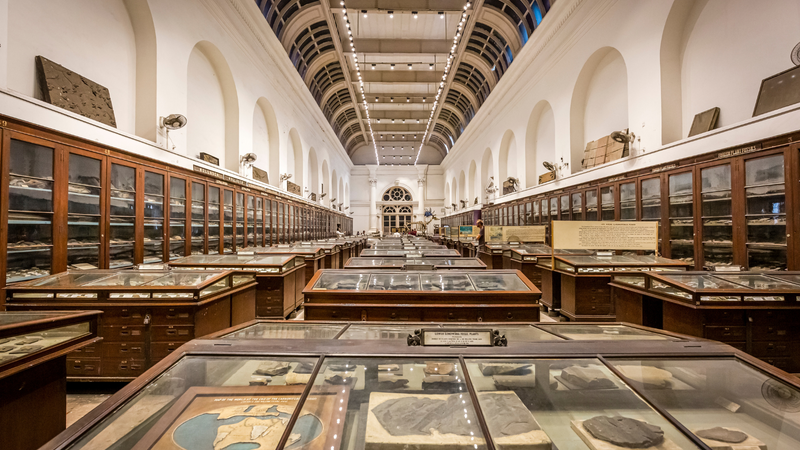
The Indian Museum in Kolkata is the largest in India. It is also the ninth-largest museum in the world. The museum, built in an exquisite Italian style of architecture, was established in 1814, by the Asiatic Society of Bengal. The museum is home to some impressively notable relics. These relics are extremely significant to the history of the world. The Indian Museum proudly serves as the safehouse and protector of these historic relics. Some of the enthralling of these relics are an Egyptian mummy, whose organs have all been extracted, except its heart, the ashes of Gautam Buddha, the four-lion bearing Ashoka Pillar that became the emblem of India, fossils of the prehistoric animals’ skeletons and many such equally important art, literature, meteorites and many more.
Best time to visit: October to March
Timings: Monday closed. 10 am to 5 pm (March to November) and 10 am to 4:30 pm (December to February)
Entry fee: Rs 10 (Indian nationals) and Rs 150 (foreign nationals)
8. St. Paul’s Cathedral, Kolkata
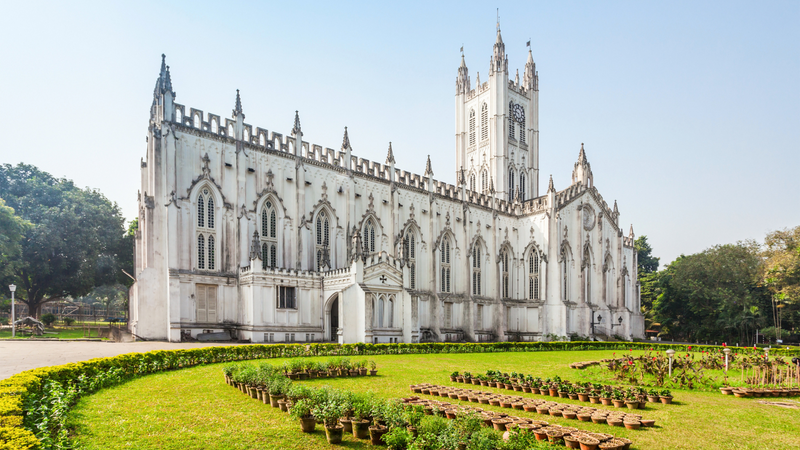
The seat of the Diocese of Kolkata, this cathedral is the first Anglican cathedral to have been built in an overseas territory of the British Empire. An outstanding Indo-Gothic style of architecture adapted to suit the more tropical climate of the Indian subcontinent, this church is a sublime example of historic architectural styles. A must-visit for history lovers, this church still functions as a place of worship and people come daily to offer prayers or to just simply marvel over the beauty of the historical monument. The Church was opened to the public in the year 1847. The British Empress sent a grand gift of ten silver-gilt plates as a symbol to mark the moment. The church spread across an extensive area, also houses several historic items collected over the years.
Best time to visit: October to March
Timings: 9 am to 12 pm, 3 pm to 6 pm (Monday-Saturday) and 7:30 am to 6 pm (Sunday)
Entry fee: Free
9. Jorbangla Temple, Bishnupur

Built in the year 1655 by the Hindu Malla King Raghunath Singh, this ancient temple is one of the best historic places in West Bengal. The temple, giving off the impression of two individual huts being thatched over by a connecting tower, is built in classic Chala architectural styles. The monument, built of laterite bricks which were prevalent during the time, has inscriptions and carvings on its walls, representing holy Hindu scriptures. Some of the carvings also portray the life of the royal family of that time as well as the normal public.
Best time to visit: October to March
Timings: 6 am to 6 pm
Entry fee: Rs 25 (Indian nationals) and Rs 300 (foreign nationals)
Disclaimer: The details mentioned throughout this blog are sourced from publicly accessible platforms. At Zeezest, we intend to share factual and verified information. Should there be any inconsistencies or variances in the information provided, please understand that these are entirely unintentional and not meant to mislead.



